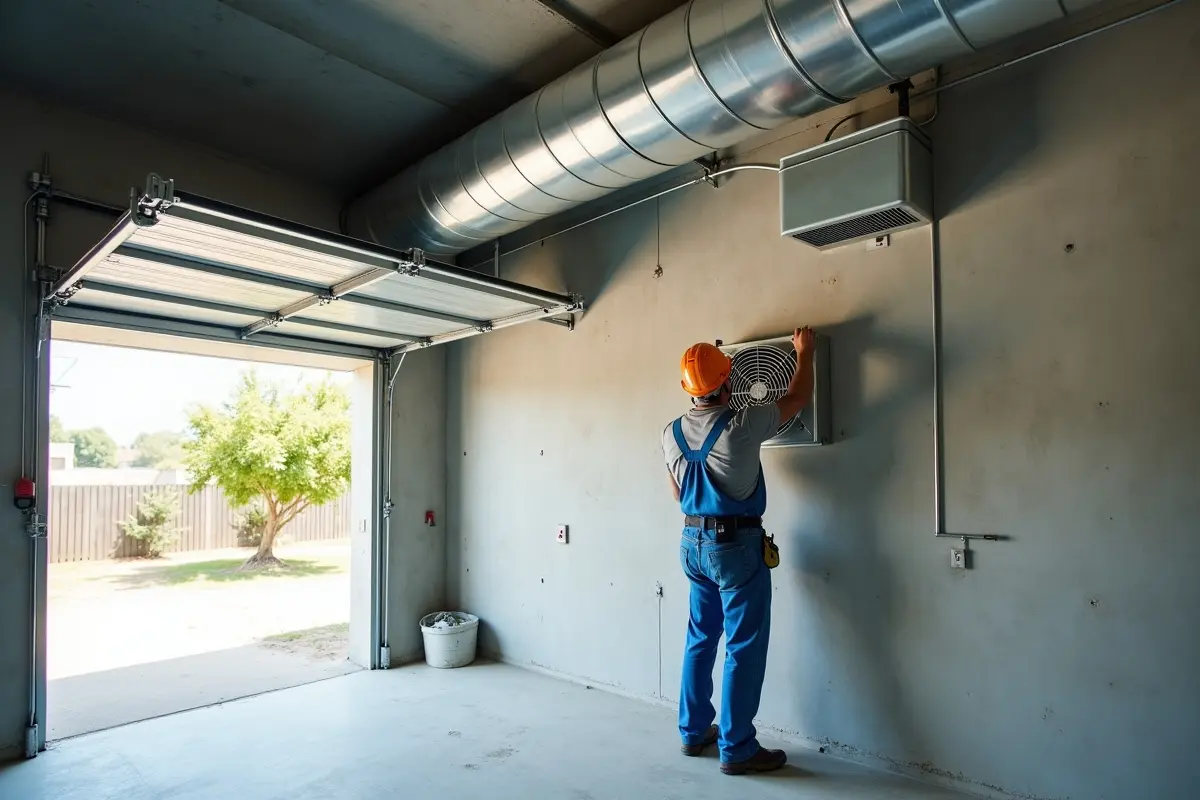
Garage Ventilation: Why It’s Crucial for Your Health and Safety
The garage is often one of the most overlooked areas in the home when it comes to ventilation. Sure, it’s the place where you park your car, store your tools, and maybe even work on projects, but it’s also a space that can accumulate harmful fumes, mold, and excess moisture if not properly ventilated.
It’s easy to think that because it’s a detached or semi-isolated part of the house, the air quality in the garage doesn’t matter as much. But in reality, poor ventilation in your garage can pose serious health and safety risks—not just to the garage itself, but also to your entire home.
Let’s break down why ventilation in your garage is so important and how it impacts both your health and safety.
The Dangers of Poor Garage Ventilation
Garages are often filled with a variety of chemicals, tools, and equipment that release harmful fumes. Whether it’s your car exhaust, paint cans, or cleaning supplies, these items can produce toxic gases that linger in the air without proper airflow.
What’s the risk?
When these fumes build up, they can pose serious health hazards. Carbon monoxide (CO), for example, is a deadly gas produced by cars, lawnmowers, and other gasoline-powered equipment. If CO builds up in a poorly ventilated garage, it can seep into your home, potentially causing carbon monoxide poisoning. The scary part? Carbon monoxide is odorless and colorless, so you won’t even know it’s there until it’s too late.
But that’s not all. Poor ventilation can also lead to:
- Mold growth – Excess moisture in the air creates the perfect environment for mold, which can trigger allergies or respiratory issues.
- Chemical exposure – Long-term exposure to chemicals, even in small amounts, can have negative effects on your health, especially if they accumulate in an enclosed space.
- Increased fire risk – In a stuffy garage, flammable fumes can build up, making it easier for a spark to ignite a fire.
The Health Benefits of Proper Garage Ventilation
The benefits of garage ventilation go far beyond avoiding immediate health risks. When your garage has proper airflow, it becomes a much safer and more comfortable space to work in or pass through. You’ll notice fewer musty odors, a reduction in humidity, and an overall fresher atmosphere.
A few key benefits of good ventilation include:
- Improved air quality – With proper ventilation, harmful fumes and pollutants are removed, helping you and your family breathe easier.
- Prevention of mold and mildew – By reducing excess moisture, you’ll lower the risk of mold and mildew growth, which can cause structural damage and health problems over time.
- Reduced heat buildup – A well-ventilated garage won’t trap heat as easily, making it more comfortable, especially during the hot summer months.
Keeping Your Garage Safe with Adequate Ventilation
Now that we’ve covered the health and safety reasons for proper ventilation, let’s look at some practical ways to make sure your garage is well-ventilated. You don’t need to undergo a massive renovation to make a difference. Sometimes, a few simple changes are all it takes.
1. Install Vents or Exhaust Fans
One of the most effective ways to improve ventilation in your garage is to install vents or an exhaust fan. Vents, either on the walls or the roof, allow air to circulate naturally, while an exhaust fan actively pushes stale air out of the garage and pulls in fresh air.
Exhaust fans are particularly useful if you spend a lot of time working on cars or using power tools, as they help remove fumes and keep the air quality in check.
2. Open the Garage Door
It might seem obvious, but simply opening the garage door for a few hours can go a long way in improving airflow. If you’re doing any work in the garage or using chemicals, make it a habit to crack the door to let fresh air in.
While this method isn’t a permanent solution, it can make a big difference, especially in a pinch.
3. Utilize Windows
If your garage has windows, take full advantage of them! Windows can create cross-ventilation when opened, allowing fresh air to circulate while stale air escapes. To maximize airflow, open both the windows and the garage door at the same time.
4. Consider a Dehumidifier
Garages can get humid, especially in warmer climates or if you live in an area with heavy rainfall. This excess moisture can contribute to mold growth and damage tools, equipment, and the structure of the garage itself. Installing a dehumidifier is an easy way to control moisture levels and keep the space dry.
Garage Ventilation and Your Home’s Safety
Beyond just improving air quality, ventilation is critical for protecting your home’s safety. If your garage is attached to your house, poor ventilation can allow toxic gases like carbon monoxide to creep into your living space. Even if the garage is detached, fumes and pollutants can still drift into the home through windows or doors.
Invest in a carbon monoxide detector.
This is especially important for attached garages. A carbon monoxide detector can alert you if dangerous levels of CO are present, giving you time to act before it becomes life-threatening. Make sure it’s placed close to the door leading from the garage into your home for maximum effectiveness.
Don’t Overlook the Importance of Garage Ventilation
Garage ventilation might not be the most exciting topic, but it’s certainly one of the most important when it comes to maintaining a safe and healthy home. By improving airflow, reducing moisture, and controlling harmful fumes, you can protect both your family and your property from hidden dangers.
Whether you install a simple exhaust fan, open windows for natural ventilation, or invest in a more permanent solution like roof vents, the key is to keep air moving and toxic fumes out. So, next time you walk into your garage, take a moment to think about how ventilated it is—you’ll be glad you did.


